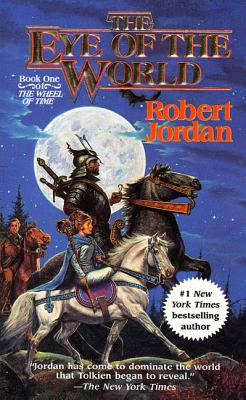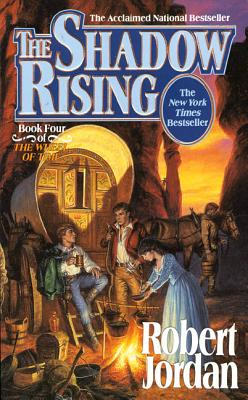It took me a month to find the time to get through The Eye of the World, which is the first book in the series, but since then I've powered through books 2-4. I guess it took me a bit of time to get my wheels spinning, but once I did, there was no stopping me. I read books 3 and 4 (700 and 950 pages, respectively) in a week, and I've had to force myself not to immediately launch into book 5. I do, after all, have other books to read and a few reviewing responsibilities here and there.
But this wasn't meant to be a re-cap of my reading speed, it was meant to be a review of the first four books in the series (as there are 12 books thus far, I thought I'd break it up and review every few books, rather than each individually).
Jordan's series, unlike George R.R. Martin's Song of Ice and Fire series, starts off fast. From chapter 2, Trollocs (something like Orcs, only with less actual thought processes) are attacked a small village in the Two Rivers. Three local boys are forced to flee their homes with the aid of only an Aes Sedai (like a sorceress, only way cooler), and her Warder (like a personal sworn guard, only better). That's actually all I can tell you without giving away the plot, and even that is too much.
Jordan leaves his readers no time for breath or thought while reading. One event picks up from the last, and when the characters go in different directions, Jordan slips smoothly into a multi-perspective account of each plotline. The main characters - I'd say about a dozen in all, although there are dozens of second- and third-tier characters - are well-developed, well-thought-out and well-written. And, again unlike Martin's Song of Ice and Fire, they are consistent. In the first four books, readers watch the characters grow and change, indeed grow along with them.
Beyond the mere storyline, Jordan has created a masterful, epic world, complete with an accurate history, a set of accepted literature, varying cultures from one area to the next (from food to speech to clothing). This world is unfolded along with the plot; the main characters have seen as little of the world as the reader, and therefore all discover its nuances along the way. As the Light battles against the Dark One, who is slowly escaping his prison in Shayol Ghul, readers are taken on a grand adventure from one end of the World to the other, across the Dragonwall, into the Aiel Waste, back to Tar Valon, down to Tanchico... and so on.
Sound unfamiliar? It is now. But by the end of book 2, you will recognize an Aes Sedai by her ageless features, you will know a Seanchan for their blurred speech, and you will see a Taraboner for her braided hair and veiled face. You will know an Aiel set to kill by his black-veiled face, and can tell an Andorman (or woman) by his or her red-gold hair.
You see? Jordan is a genius of world creation. However much time he spent developing the world for this series, it pays off.
Bottom line: I don't profess to have read the scope of fantasy literature, but I do agree whole-heartedly with the New York Times blurb printed on the front cover of each of these books: "Jordan has come to dominate the world that Tolkien began to reveal."










No comments
Thanks for stopping by!